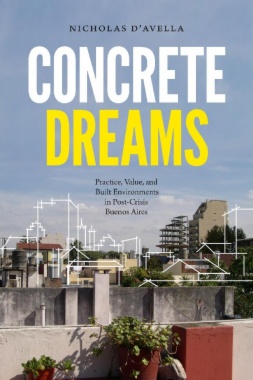In Concrete Dreams Nicholas D’Avella examines the changing social and economic lives of buildings in the context of a construction boom following Argentina's political and economic crisis of 2001. D’Avella tells the stories of small-scale investors who turned to real estate as an alternative to a financial system they no longer trusted, of architects who struggled to maintain artistic values and political commitments in the face of the ongoing commodification of their work, and of residents-turned-activists who worked to protect their neighborhoods and city from being overtaken by new development. Such forms of everyday engagement with buildings, he argues, produce divergent forms of value that persist in tension with hegemonic forms of value. In the dreams attached to built environments and the material forms in which those dreams are articulated—from charts and graphs to architectural drawings, urban planning codes, and tango lyrics—D’Avella finds a blueprint for building livable futures in which people can survive alongside and even push back against the hegemony of capitalism.
- Cover
- Contents
- Acknowledgments
- Introduction: Concrete Dreams
- 1. Crisis Histories, Brick Futures: Economic Storytelling and Investments in Real Estate
- 2. A Market in Square Meters: Numbers and Narrative in Real Estate Market Analysis
- 3. Barrio Ecologies: Parks, Patios, and the Politics of Articulation
- 4. Recoding the City: Plans, Codes, and the Politics of Voice
- 5. Architecture Is for Everyone: Bodies, Drawing, and the Politics of Care
- Epilogue: Enduring Values
- Notes
- Works Cited
- Index
- A
- B
- C
- D
- E
- F
- G
- H
- I
- J
- K
- L
- M
- N
- O
- P
- Q
- R
- S
- T
- U
- V
- W
- Y
- Z

